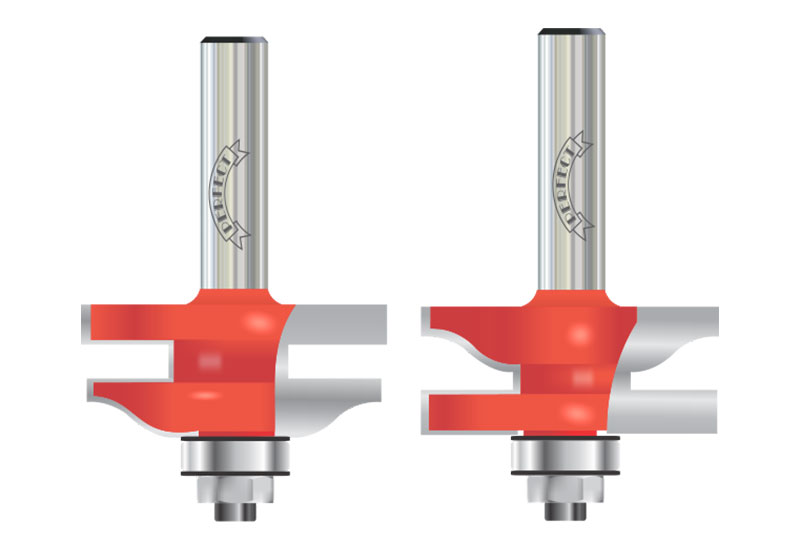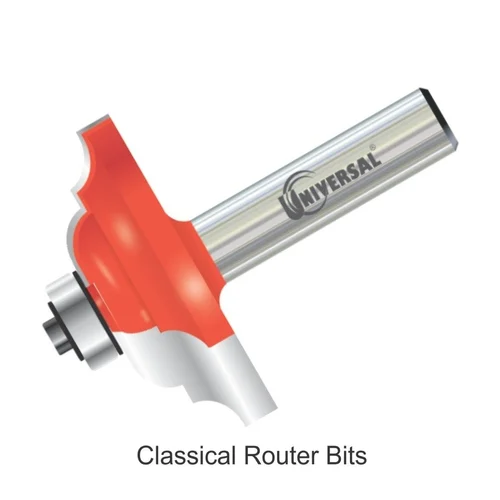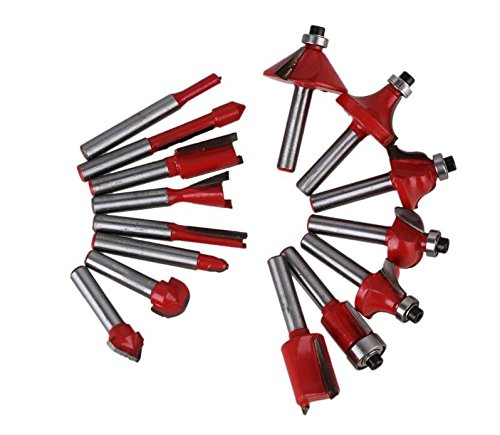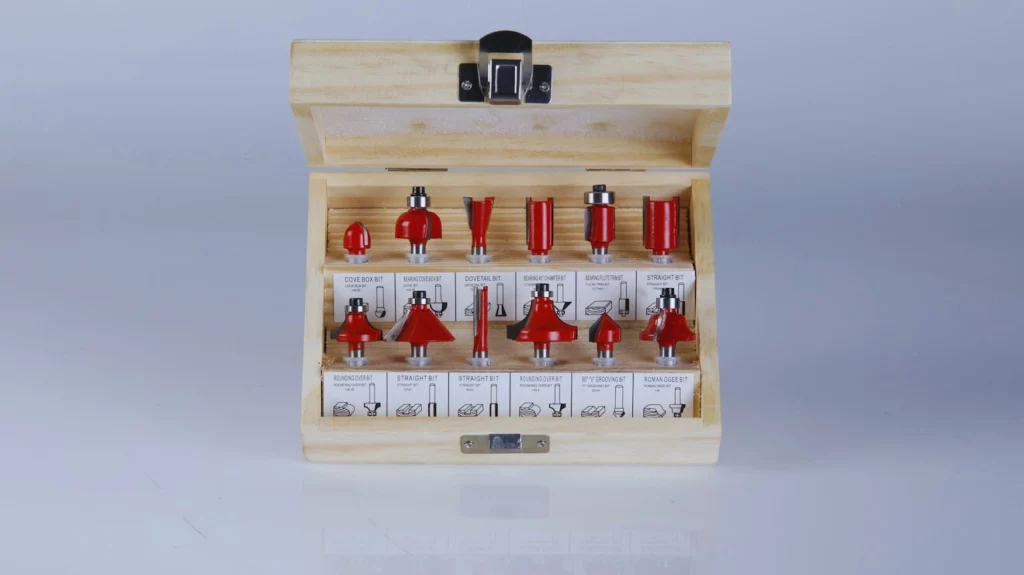
I. Introduction

Router bits are an essential tool for woodworking, and they come in a variety of shapes and sizes to suit different tasks. In this guide, we will discuss the different types of router bits, how to choose the right one for your project, and how to use them safely. We will also cover common router bit problems and how to troubleshoot them.
II. Types of Router Bits

Router bits come in a variety of shapes and sizes, each designed for a specific purpose. The most common types of router bits include:
- Straight bits: These bits are used for creating grooves, dadoes, and rabbets.
- Ogee bits: These bits are used for creating decorative moldings.
- Roundover bits: These bits are used for creating rounded edges.
- Bevel bits: These bits are used for creating angled edges.
- Coping bits: These bits are used for creating intricate shapes.
When choosing a router bit, it is important to consider the type of project you are working on and the desired results. For example, if you are creating a simple groove, a straight bit will be sufficient. However, if you are creating a complex molding, you will need to use a more specialized bit, such as an ogee bit or a bevel bit.
It is also important to consider the material you will be working with. For example, carbide router bits are the best choice for working with hardwoods, while high-speed steel router bits are a good choice for working with softwoods.
III Choosing the Right Router Bit

When choosing the right router bit for your project, there are a few factors you need to consider. These include the type of material you will be working with, the size and shape of the cut you need to make, and the speed of your router.
The type of material you will be working with will determine the type of router bit you need. For example, if you will be working with softwoods, you can use a standard carbide router bit. However, if you will be working with hardwoods, you will need a carbide router bit with a higher hardness rating.
The size and shape of the cut you need to make will also determine the type of router bit you need. For example, if you need to make a straight cut, you will need a straight-fluted router bit. However, if you need to make a curved cut, you will need a spiral-fluted router bit.
The speed of your router will also affect the type of router bit you need. If you are using a high-speed router, you will need a router bit that is designed for high-speed cutting. However, if you are using a low-speed router, you can use a router bit that is designed for low-speed cutting.
By considering the factors listed above, you can choose the right router bit for your project and ensure that you get the results you want.
IV. Using Router Bits Safely

Router bits are sharp and can be dangerous if not used properly. Here are some tips for using router bits safely:
Always wear safety glasses when using a router.
Keep your hands away from the router bit when it is in use.
Use the correct size router bit for the job.
Make sure the router is properly adjusted before using it.
Be aware of the potential hazards of using a router and take steps to avoid them.
By following these tips, you can help to reduce the risk of injury when using a router.
V. Router Bit Maintenance

Router bits are an important investment, so it is important to take care of them properly to ensure that they last for a long time. Here are a few tips for maintaining your router bits:
Clean your router bits after each use. This will help to remove any debris that may have become stuck to the bit, which can damage the bit over time.
Store your router bits in a safe place. This will help to protect them from damage, such as being dropped or scratched.
Sharpen your router bits regularly. This will help to maintain the cutting edge of the bit, which will result in better performance.
By following these tips, you can help to extend the life of your router bits and ensure that they are always in good working order.
VI. Common Router Bit Problems

There are a number of common router bit problems that can occur, including:
- Chipping or breaking the router bit
- Burning the workpiece
- Rubbing the router bit against the workpiece
- Worn-out router bits
Each of these problems can be avoided by following proper router bit safety and maintenance procedures.
To avoid chipping or breaking the router bit, make sure to use the correct router bit for the job and to always use a sharp bit. Also, be sure to feed the router bit into the workpiece slowly and steadily.
To avoid burning the workpiece, make sure to use a sharp bit and to feed the router bit into the workpiece slowly and steadily. Also, be sure to use the correct speed setting for the router bit and the workpiece.
To avoid rubbing the router bit against the workpiece, make sure to use a sharp bit and to feed the router bit into the workpiece slowly and steadily. Also, be sure to use the correct speed setting for the router bit and the workpiece.
To avoid worn-out router bits, make sure to clean and lubricate the router bits regularly and to replace them when they are worn out.
By following these tips, you can help to avoid common router bit problems and keep your router bits in good working order.
VII. Frequently Asked Questions
- Here are some frequently asked questions about router bits:
- What is the difference between a router bit and a drill bit?
- What are the different types of router bits?
- How do I choose the right router bit for my project?
- How do I use router bits safely?
- How do I maintain router bits?
- What are some common router bit problems?
For more information on router bits, please refer to the resources section below.
Resources
Here are some resources that you may find helpful:
The Spruce Crafts: Router Bit Basics
Popular Woodworking: Router Bit Buying Guide
Woodcraft: Router Bits 101: A Beginner’s Guide
Conclusion
In this article, we have discussed the different types of router bits, how to choose the right router bit for your project, and how to use and maintain router bits safely. We have also provided a list of resources for further information. We hope that this article has been helpful and that you now feel more confident in using router bits. If you have any questions or comments, please feel free to leave them below. Thank you for reading!
Frequently Asked Questions
1. What are the different types of router bits?
There are many different types of router bits, each designed for a specific purpose. Some of the most common types of router bits include:
- Straight bits: These bits are used for creating grooves, dadoes, and rabbets.
- Ogee bits: These bits are used for creating decorative edges and curves.
- Coping bits: These bits are used for cutting around curves and shapes.
- Ball Nose bits: These bits are used for creating rounded edges.
- Spade bits: These bits are used for drilling holes.
2. How do I choose the right router bit for my project?
When choosing a router bit, you need to consider the following factors:
- The type of material you will be working with
- The size and shape of the cut you need to make
- The speed of your router
- The depth of the cut you need to make
3. How do I use router bits safely?
Router bits can be dangerous if not used properly. Here are some tips for using router bits safely:
- Always wear safety glasses when using a router.
- Make sure the router is properly adjusted and secured before using it.
- Use the correct type of router bit for the job you are doing.
- Never force the router bit through the material.
- Keep your hands away from the router bit when it is in operation.
4. How do I maintain router bits?
Router bits need to be maintained to ensure that they perform properly and last a long time. Here are some tips for maintaining router bits:
- Clean the router bits after each use.
- Sharpen the router bits regularly.
- Store the router bits in a safe place when not in use.
5. What are some common router bit problems?
There are a few common router bit problems that you may encounter. Here are some tips for troubleshooting these problems:
- If the router bit is not cutting properly, it may be dull. Try sharpening the bit or replacing it with a new one.
- If the router bit is binding, it may be the wrong size for the job you are doing. Try using a smaller or larger bit.
- If the router bit is smoking, it may be overheating. Try reducing the speed of your router or taking a break to let the router cool down.




